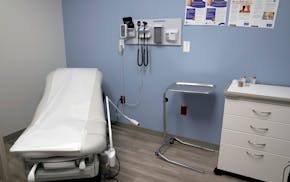The number of job vacancies in Minnesota climbed 16 percent at the end of 2017 and the portion that were part-time dipped slightly, two more signs of the state's extremely tight labor market.
In a state where about 3 million people are working, employers reported 114,000 job openings in the fourth-quarter survey by the Minnesota Department of Employment and Economic Development (DEED). That's up from 97,400 vacancies a year earlier.
The agency does an in-depth report on job vacancies twice a year and released the latest data Thursday.
It showed that the number of openings fell from the 122,900 reported midway through 2017, a drop that was likely shaped by seasonal factors. The data also showed a fewer number of openings for temporary, or seasonal, work at the end of the year than in the middle.
"These figures indicate that both the economy and hiring demand are strong statewide," DEED Commissioner Shawntera Hardy said in a statement.
Median hourly pay was $14.34 an hour at the end of 2017, up from $13.97 an hour at the end of 2016 but down from $14.39 an hour at the midpoint of 2017.
The survey found that 41 percent of the open jobs at the end of 2017 were part-time work, defined as less than 35 hours a week. That's down from 43 percent a year ago and 44 percent midway through the year.
Over the past few years, the vacancy rate has risen most sharply in lower-paying jobs, a study by the Star Tribune showed earlier this year. That's partly due to demographics, as participation in the labor force shrinks with the retirement of baby boomers and the elevation of lower-paying workers into higher paying jobs.
At the same time, some employers are opting to leave low-wage jobs open rather than offer more money, particularly if they have difficulty raising prices to cover those higher costs.
The latest data from DEED shows that health care and social assistance jobs accounted for almost one-fourth of the vacancies. Retail jobs accounted for about 17 percent of the openings and restaurant and accommodation employers were about 14 percent of the openings.
Employers in the Twin Cities continued to have a harder time filling jobs than those in the rest of the state, the data showed. The metro area had 0.6 unemployed people for every job opening, while the ratio of unemployed people to job openings in the rest of the state was 1-1.
At the height of the recession in 2009, the number of unemployed outnumbered job openings in Minnesota 8-1.
Evan Ramstad • 612-673-4241
China's economy grew 5.3% in first quarter, beating expectations
NASA confirms mystery object that crashed through roof of Florida home came from space station

New rules for Pregnant Workers Fairness Act include divisive accommodations for abortion
Saudi foreign minister arrives in Pakistan to discuss how to help with the country's economic crisis
